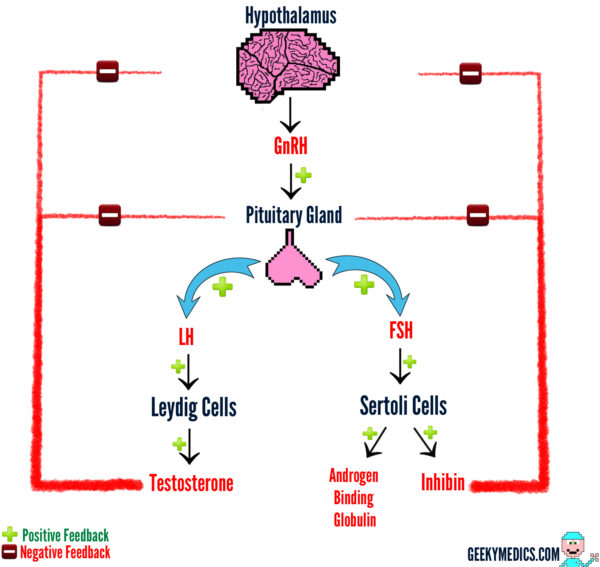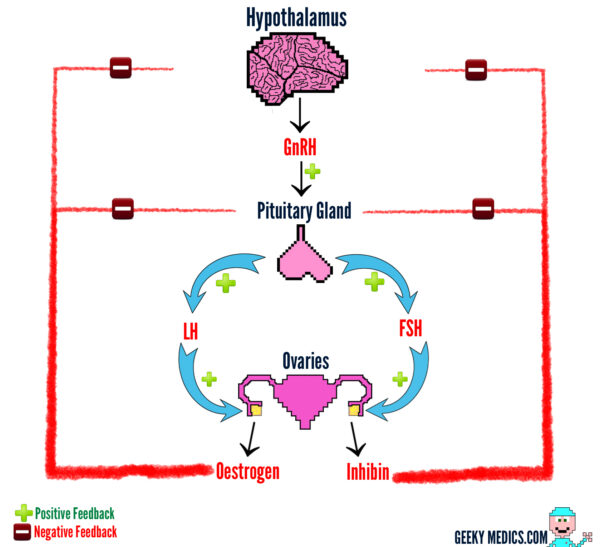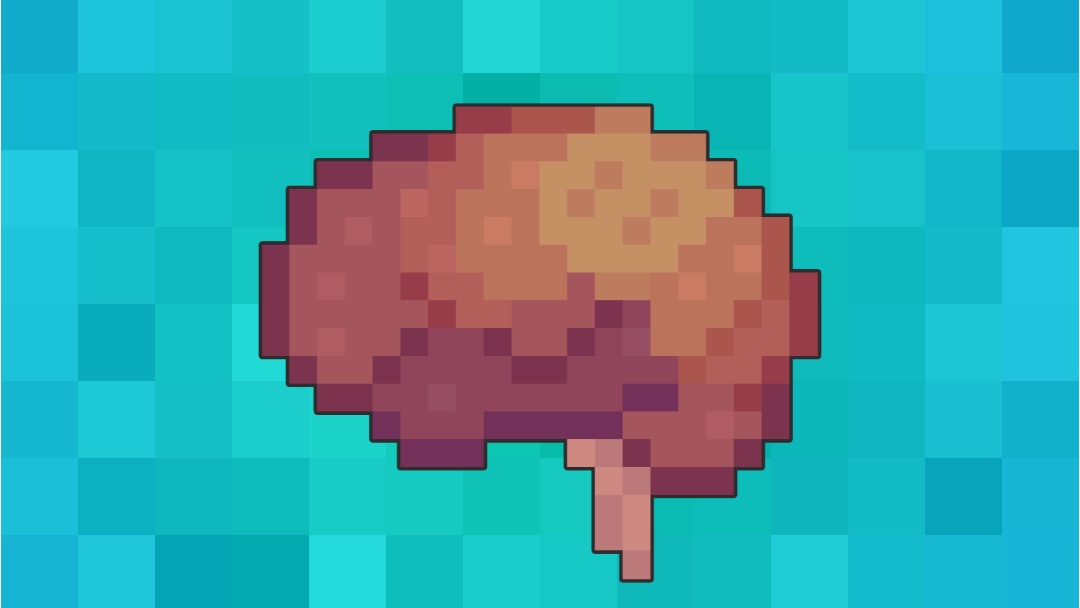- 📖 Geeky Medics OSCE Book
- ⚡ Geeky Medics Bundles
- ✨ 1300+ OSCE Stations
- ✅ OSCE Checklist PDF Booklet
- 🧠 UKMLA AKT Question Bank
- 💊 PSA Question Bank
- 💉 Clinical Skills App
- 🗂️ Flashcard Collections | OSCE, Medicine, Surgery, Anatomy
- 💬 SCA Cases for MRCGP
To be the first to know about our latest videos subscribe to our YouTube channel 🙌
What is the gonadal axis?
The gonadal axis involves a complex interaction between the hypothalamus, pituitary gland and the gonads. This axis helps to regulate development, reproduction, ageing and many other key physiological processes.
How the male gonadal axis works
1. The hypothalamus secretes GnRH.
2. GnRH travels down to the anterior pituitary gland and binds to receptors on the gland.
3. This promotes the release of LH (luteinizing hormone) and FSH (follicle-stimulating hormone).
4. LH and FSH travel in the bloodstream to the testicles.
5. LH stimulates Leydig cells in the testicles to produce testosterone (testosterone is required for spermatogenesis and many other important biological processes).
6. FSH stimulates Sertoli cells to produce androgen binding globulin (ABG) and inhibin:
- Androgen binding globulin is a protein that binds to testosterone and prevents it from leaving the seminiferous tubules
- Inhibin helps support spermatogenesis and inhibits the production of FSH, LH and GnRH
7. Increased levels of testosterone and inhibin have a negative feedback effect on the pituitary and hypothalamus.
8. This results in decreased production of LH and FSH.
9. As a result, the production of testosterone and inhibin is also decreased.

How the female gonadal axis works
1. The hypothalamus secretes GnRH.
2. GnRH travels down to the anterior pituitary gland and binds to receptors on the gland.
3. This promotes the release of LH (luteinizing hormone) and FSH (follicle-stimulating hormone).
4. LH and FSH travel in the bloodstream to the ovaries.
5. When LH and FSH bind to the ovaries they stimulate the production of oestrogen and inhibin:
- Oestrogen helps to regulate the menstrual cycle and is an essential component in many other physiological processes
- Inhibin causes inhibition of activin which is usually responsible for stimulating GnRH production
6. Increasing levels of oestrogen and inhibin have a negative feedback effect on the pituitary and hypothalamus.
7. This leads to the decreased production of GnRH, LH and FSH.
8. This, in turn, results in decreased production of oestrogen and inhibin.





